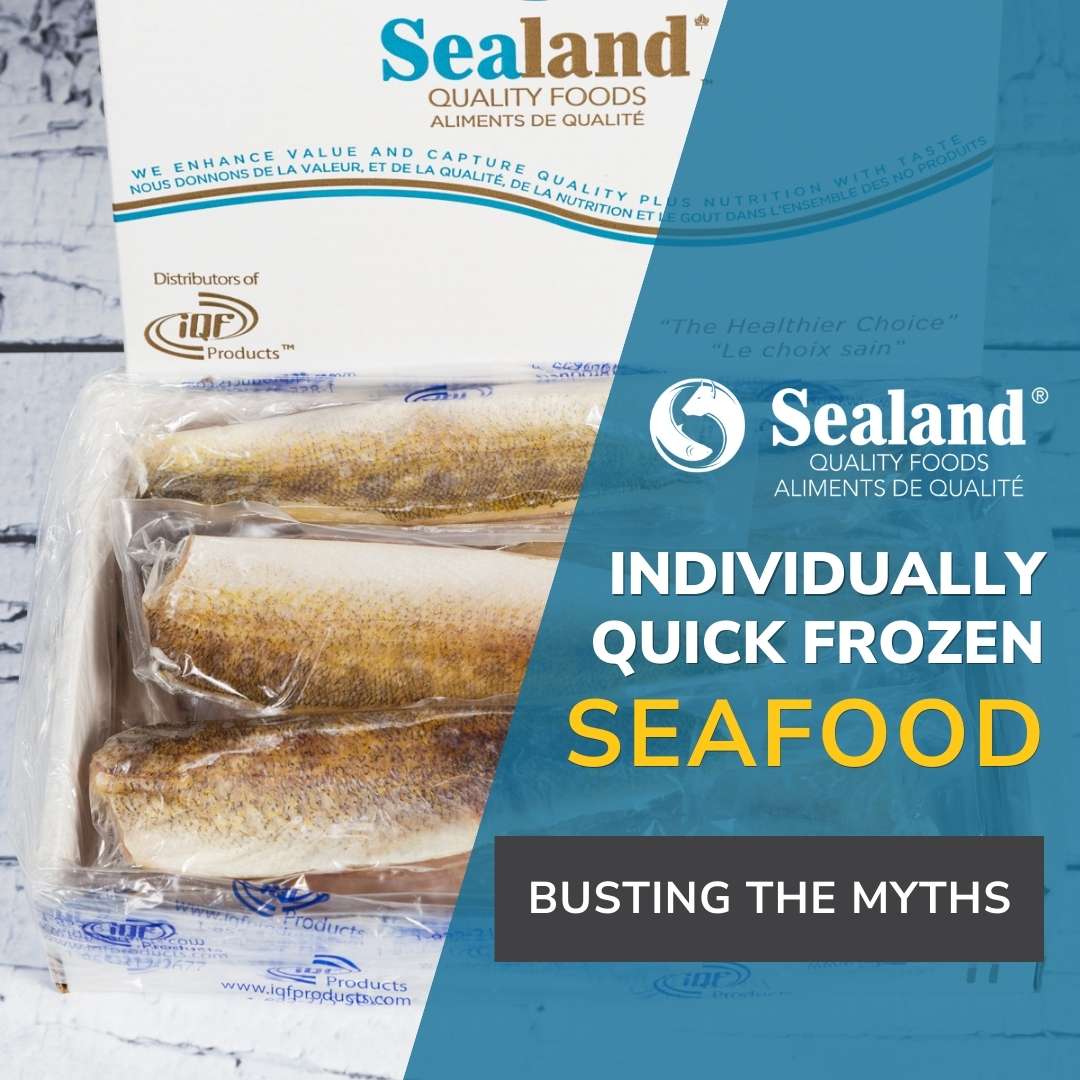
Myth 1: Frozen seafood is not as fresh
There’s no denying that seafood straight off the boat is fantastic quality, but unless you live within a stone’s throw of the ocean, the fresh seafood available to you probably isn't as fresh as you might think. With the rise of globalization, much of the seafood we get here in Canada is actually imported and has likely spent several days out of water before it ever reaches your plate.
But when seafood is Individually Quick Frozen, it is flash frozen at temperatures between -40°C and -60°C shortly after being caught. This rapid and efficient process seals in freshness at peak levels before any degradation can occur, meaning iQF seafood is actually often fresher than the “fresh” alternative!
Myth 2: Frozen seafood doesn’t taste as good
To properly bust this myth, we’re going to need to get a little bit sciencey! When seafood is block frozen the old school way, there is a tendency for large crystals to form in the cells, destroying their structures at a molecular level (remember the pop you left in the freezer that one time?).
iQF technology sidesteps this flavour-destroying landmine by flash freezing the seafood in a matter of minutes, stopping the crystals of doom in their tracks. This protects the protein and fat structures, thus sealing in flavour and preserving the texture, taste, smell and shape.

Myth 3: Frozen seafood is not as environmentally friendly
Fresh seafood has to cover a lot of kilometers before reaching the majority of us landlocked Canadians. In order to keep it as fresh as possible this often means shipping by air, which is pretty much the least environmentally friendly form of transportation! On the other hand, seafood that is frozen close to where it’s caught is far easier to ship, as it can be transported via sea, road and rail. This helps reduce the environmental impact of transportation, making frozen seafood a greener choice.
Another great environmental benefit of iQF seafood is that it helps eliminate food waste. iQF products can be stored in the freezer for many months without any loss of quality, meaning you won’t have to throw them out when they go bad (like with fresh seafood). And the “i” in iQF helps here too, as individual portions mean you only defrost what you plan to use, which is ideal when you’re not in the mood to tackle a whole Yellowfin tuna!
Myth 4: Frozen seafood is bad for the fishing industry
With today’s high level of demand, it is becoming increasingly difficult for fishing operations to deliver fresh seafood to the consumer, but iQF technology is helping ease this burden. By purchasing frozen instead of fresh, it helps support the fishermen by alleviating the extra costs and logistical pressures they face when delivering fresh seafood immediately after it is caught.

Myth 5: Frozen seafood is not as nutritious
When it comes to nutrition, fresh is always better than frozen, right? Well, with iQF technology, that may no longer be the case. As soon as seafood is caught it begins to suffer from bacteriological degradation, which affects the overall nutrient quality. Preserving agents and techniques can be used to keep the seafood as fresh as possible, but these practices themselves can also negatively impact nutritional value.
Frozen seafood of the past didn’t really eliminate this issue, as many nutrients would be lost during the long freezing process (remember the crystals of doom?). Fortunately for frozen fish everywhere, iQF technology has all but solved this problem with its flash freezing technique that seals in nutrients before any degradation can take place. Now the only time that nutrient loss can occur is during the thawing process, but this can be mitigated almost entirely by using the proper defrosting technique. And as an added bonus, frozen seafood is actually safer than fresh, as any bacteria that may be present are killed instantly during the freezing process!
Final Word:
If you wake up to the sound of the ocean lapping the shore every morning and have direct access to locally caught fresh seafood, then keep doing what you’re doing (and maybe check out our selection of top quality iQF meat!). But for just about everyone else, Individually Quick Frozen is now the best choice for high quality, nutrient dense seafood that looks, smells and tastes just as good as the day it was caught!


